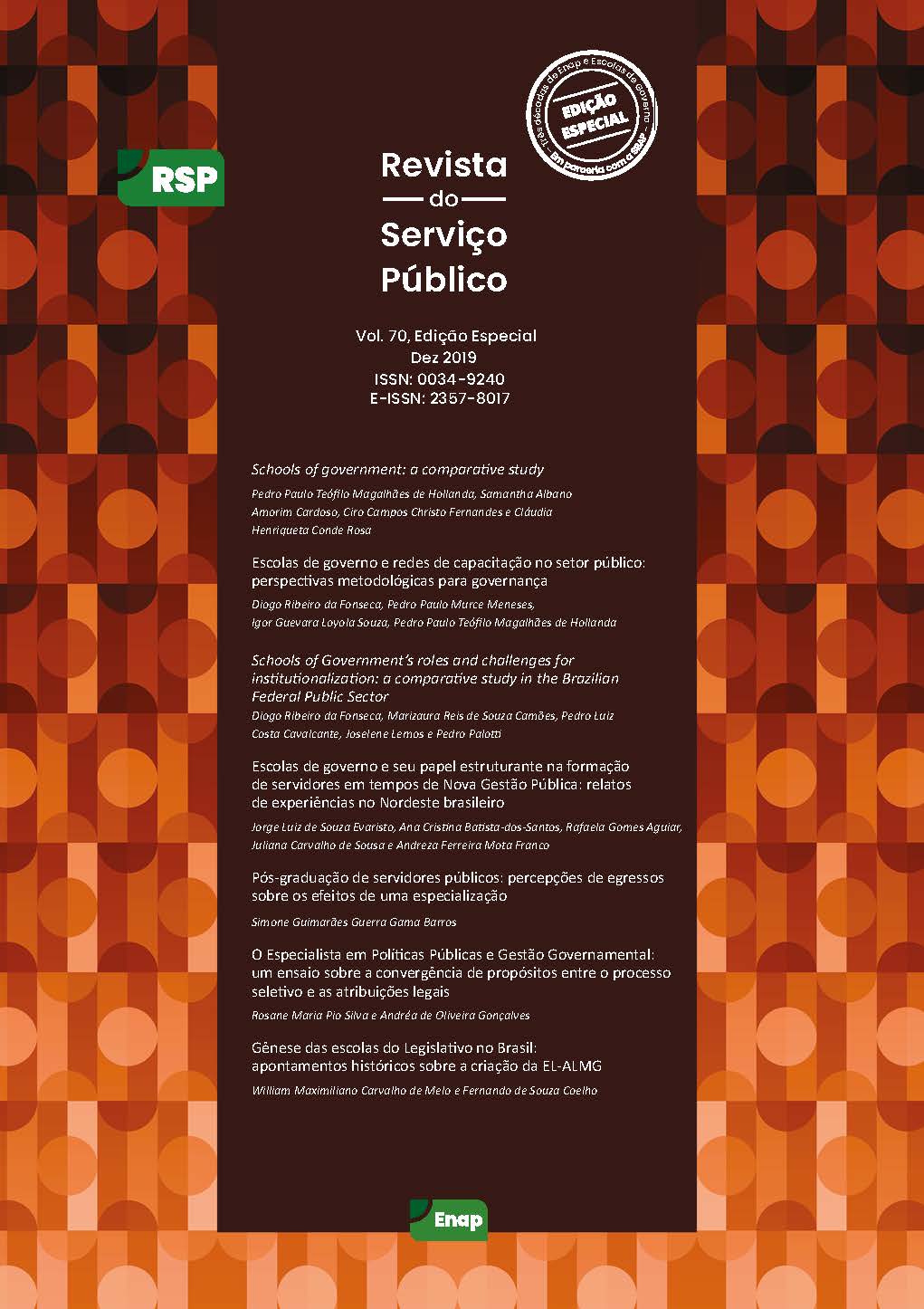GENESIS OF THE LEGISLATIVE SCHOOLS IN BRAZIL
HISTORICAL NOTES ON THE CREATION OF THE EL-ALMG
DOI:
https://doi.org/10.21874/rsp.v70i0.4042Keywords:
Legislative School, History, Administrative Modernization, Professionalization, Training of Civil ServantsAbstract
In 2018, while the Federal Constitution of 1998 celebrated 30 years in Brazil, the Legislative Schools' trajectory totalized 25 years old. In 1993 was created, in the country, the first organization for corporate education as a parliament's section, which would be called the 'Legislative School' (EL - acronym in Portuguese) at the Legislative Assembly of Minas Gerais (ALMG - acronym in Portuguese). Currently, there are around 200 organizations (schools, centers, and institutes), belonging to the legislative branches, in the three levels of government, that have emerged in the post-redemocratization period. In this article, with the aim of describing and analyzing the genesis of these institutions in the national legislative branch, a case study of the creation of EL-ALMG is conducted. It is a contribution to the background and the memory of this concept/structure of training, qualification, and formation into the legislative bodies. The historical line, derived from the documental analysis from ALMG's archives and parliamentary speeches, is organized chronologically and shows that this new model emerged as an outcome from the process of administrative modernization in the legislative branch, likewise that the government schools have swollen in the executive branch, after the managerial reform from 1995's.
Downloads
Downloads
Published
How to Cite
Issue
Section
License
- A RSP adota a licença Creative Commons (CC) do tipo Atribuição – Uso Não-Comercial (BY-NC).
- A licença permite que outros remixem, adaptem e criem obra licenciada, sendo proibido o uso com fins comerciais.
- As novas obras devem fazer referência ao autor nos créditos e não podem ser usadas com fins comerciais, porém não precisam ser licenciadas sob os mesmos termos dessa licença.
- Ao publicar o artigo na RSP, o autor cede e transfere para a ENAP os direitos autorais patrimoniais referentes ao artigo.
- O artigo publicado na RSP não poderá ser divulgado em outro meio sem a devida referência à publicação de origem.
- O autor que tiver o artigo publicado na RSP deverá assinar o Termo de Concessão de Direitos Autorais (em momento oportuno a editoria da Revista entrará em contato com o autor para assinatura do Termo).



